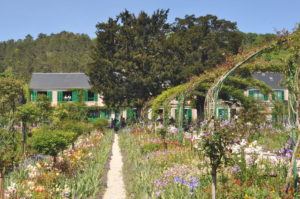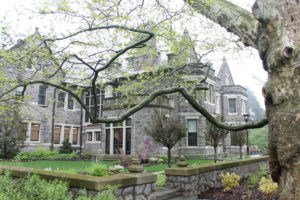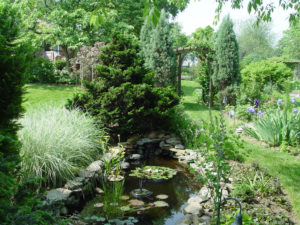Five Lessons from the Flower Garden Master
May 24th, 2022
Flower color is one of nature’s most joyous gifts to people.

Monet’s 2-acre front-yard garden looks like “an explosion at a paint factory,” as one writer described it.
Even non-gardeners appreciate it, while many a gardener strives to load the yard with a nonstop parade of flower power from the season’s first hellebores to the last Montauk daisy petal of fall.
That’s not easy.
More color means more plants, more effort, and especially a lot of skill to orchestrate it all.
No one was better at that than the French master painter Claude Monet, who was arguably one of the world’s best flower gardeners in addition to being one of its best-ever artists.
Monet created a magnificent 2-acre flower garden across the front of his modest home in Giverny, a countryside village about an hour drive west of Paris. He built it mainly as a model for his paintings.
Some 130 years after Monet begin painting, his Giverny garden is still turning out massive color. It’s the most exuberant flower garden I’ve ever seen, and it fires on all cylinders all season long.
One writer observed that the garden reads like an “explosion at a paint factory.”
I first saw Monet’s garden six years ago in September, when dahlias, sunflowers, nasturtiums, mums, cosmos, zinnias, and numerous other summer annuals dominated the landscape.
I saw it again a few weeks ago on a group tour I hosted with Lowee’s Group Tours. Despite being filled with all different plants, it was still full and colorful even though it was so early in the gardening season.
This time, the wall-to-wall color was coming from the end of the tulip bloom, from cool-season annuals such as pansies and wallflowers, from May-blooming perennials such as salvia, irises, and woodland phlox, and from the beginning of rose bloom.
Following Monet’s long ago lead, today’s staff masterfully color-coordinates each vignette and constantly plants, deadheads, and replants to achieve that difficult goal of color everywhere all season long.
It’s a living textbook in how to mix and match plants.
Maybe we can’t recreate Monet’s 2 acres of blooming glory, but we can glean a few lessons on how to improve our yards’ color show.












